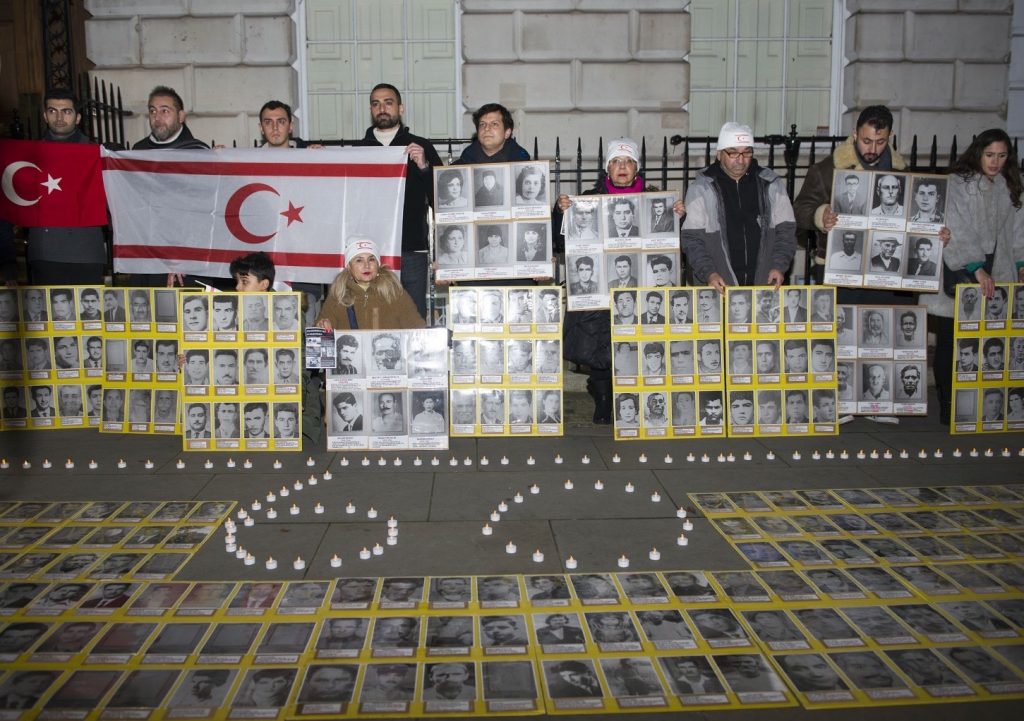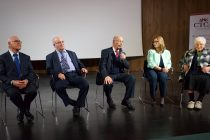British Turkish Cypriots have staged a poignant vigil to remember the 133 victims killed by Greek Cypriots when they mounted a brutal coup on 21 December 1963.
A group of about 30 people assembled outside the Greek Cypriot High Commission on St James’s Square, central London, on Thursday evening to protest their government’s refusal to admit to the massacre of Turkish Cypriots sixty years ago, while holding a vigil to remember all those killed.
The group displayed boards bearing the name, age and photograph of every victim. Candles were laid out on the ground, some in the shape of the number ‘60’ to denote the sixtieth anniversary of ‘Bloody Christmas’, a 10-day killing spree which started on 21 December 1963 and resulted in Turkish Cypriot civilians of all ages, including children and the elderly, being murdered by Greek Cypriots as they seized control of the Republic of Cyprus.
The protestors projected photos of individual victims on to a large screen, while Husayn Hashim El Bakayi – the UK’s foremost pastor (‘hoca’) for Turkish Cypriots – recited Islamic prayers in remembrance of the dead. Those present held hands, heads bowed, as they reflected on those who had been killed.
The two-hour event, which started at 6.30pm, was jointly organised by human rights group Embargoed!, and two lobby groups, the British Turkish Cypriot Association and Young Turkish Cypriots (Y.T.C.).
Police present at the vigil prevented their leaders from hand-delivering a letter to the Greek Cypriot High Commissioner.
Two years earlier, those present at a similar vigil had hung a flag of the Turkish Republic of North Cyprus (TRNC) from the embassy’s railings. Greek Cypriot authorities complained about the incident, prompting Thursday’s police presence.
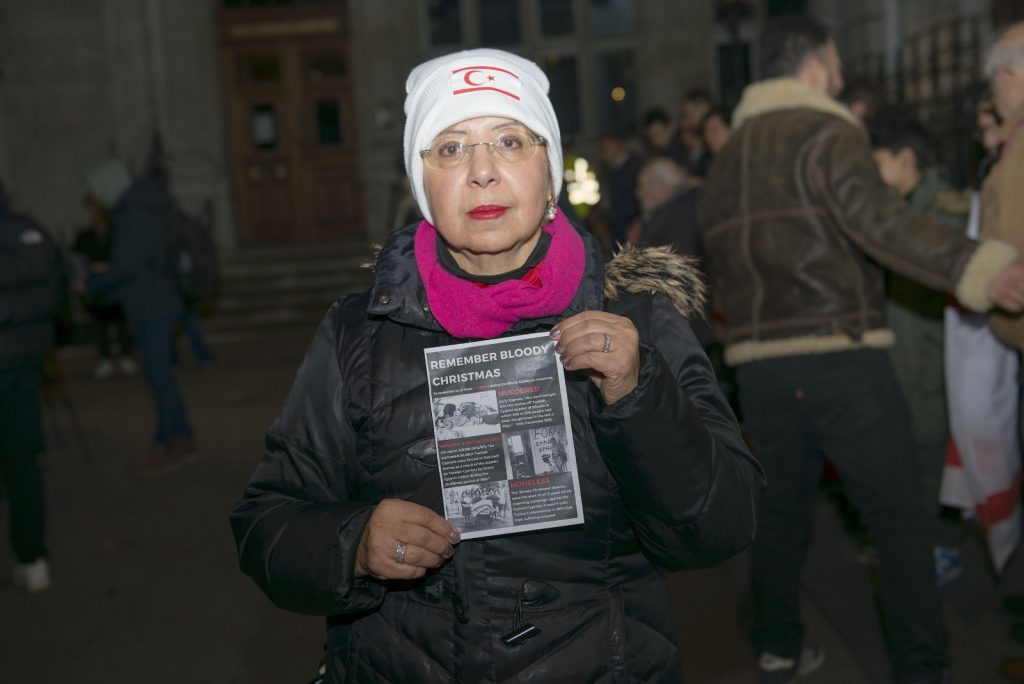
Protestors still displayed their TRNC flags at this year’s vigil, along with those of Turkiye, which serves as a guarantor power for Turkish Cypriots, while others distributed flyers about the sombre anniversary to passers by.
Bloody Christmas 1963
The attacks that were launched against Turkish Cypriots on 21 December 1963 marked the start of the decade-long Cyprus Conflict.
Under the now notorious Akritas Plan, Greek Cypriot government ministers had plotted to overthrow their Turkish Cypriot partner and seize control of the Republic of Cyprus state. Once in their control, Greek Cypriots intended to turn the power-sharing federal into a Hellenic state that would be united with its motherland Greece.
Headed by then Archbishop Makarious, the Greek Cypriot ministers were supported in their dark endeavours by fascist paramilitary group EOKA. Their carefully developed plans ended up starting a few days earlier than intended.
Late on 20 December, a row broke out in the mixed Greek-Turkish neighbourhood of Tahtakale in the capital Nicosia, near the Famagusta Gate.
Greek Cypriot police had tried to search a Turkish Cypriot male, Zeki Halil, but he objected, citing his constitutional rights that a Turkish Cypriot police officer be also present.
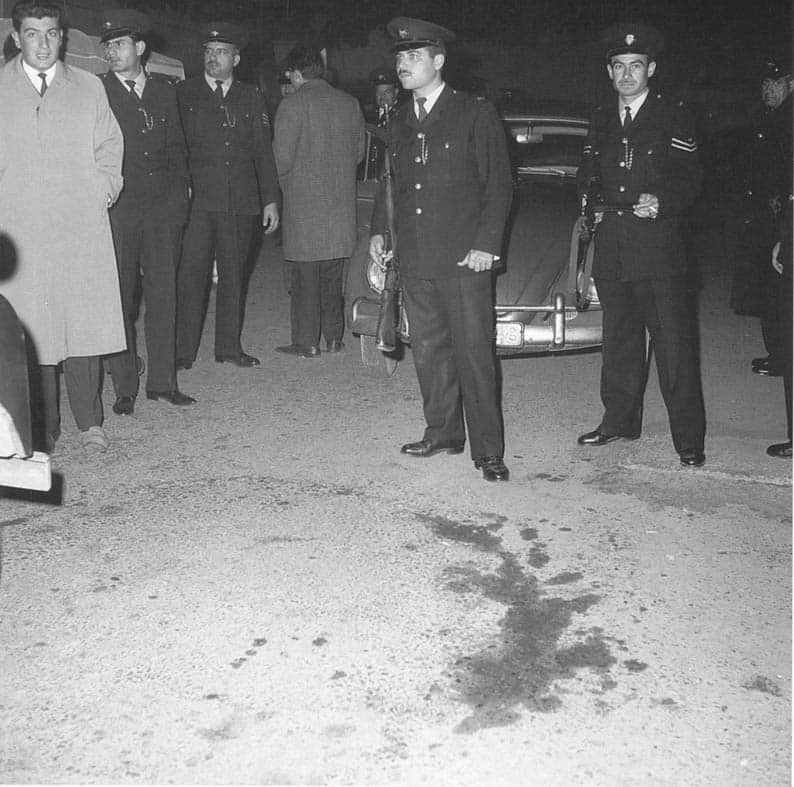
As the row grew and local people came out of their homes, the Greek Cypriot officers called for back-up. In the ensuing melee, the Greek Cypriot police shot Halil and a female bystander, Cemaliye Emirali. Turkish Cypriots responded in kind a few hours later, shooting dead a Greek Cypriot police officer.
These events lit the fuse for widescale attacks against Turkish Cypriots. Greek Cypriots attacked Turkish Cypriot neighbourhoods, burning homes and shooting local people.
Turkish Cypriot civilians were abducted as they travelled across the island; some were tortured and released, others were murdered, and some have never been seen again.
This brutal 10-day terror campaign left hundreds of Turkish Cypriots dead or injured, while a quarter of the population – some 25,000 people – were displaced from their homes.
The Green Line
Turkish Cypriots in key government positions were forced out at gunpoint, as Greek Cypriots seized full control of the state apparatus of the Republic of Cyprus.
To try and keep the peace in the capital, the British whose troops were stationed on its two sovereign military bases in Cyprus, sought to establish a buffer zone in the capital in the last days of 1963.
A senior British soldier, Major-General Peter Young, drew a ceasefire line on a map of the city using a green pencil on 30 December 1963 as a means of identifying where to physically separate the Greek and Turkish Cypriots communities and check the violence between them.
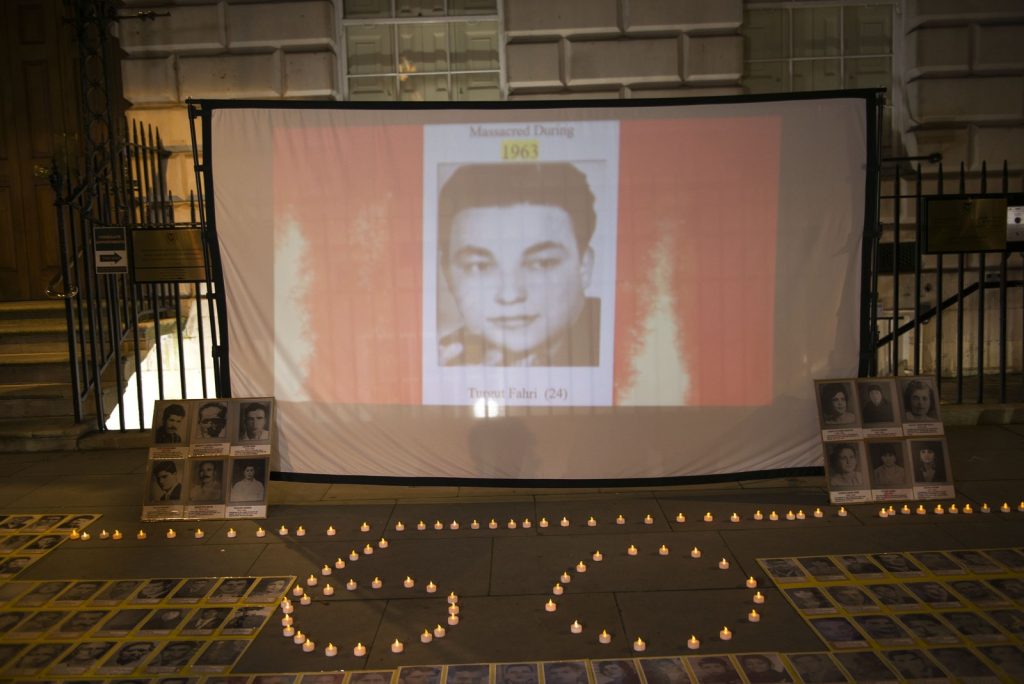
Major-General Young was appointed the commander of the British Joint Force, which was set up in the wake of the inter-communal violence that broke out during Christmas 1963. It was the predecessor of the present United Nations peacekeeping force (UNFICYP).
While an increasing number of Greek Cypriot academics, peace activists and progressive media have started to acknowledge the events of 1963, the majority remain wholly ignorant to these events having been brought up on an alternative narrative that puts the blame on Turkish Cypriot leaders, who they accuse of spreading fear and misinformation, and carrying out false flag operations and insurrection designed to push the communities apart and create partition [‘taksim’].
That view holds little credence with international eyewitnesses present in Cyprus in 1963 and 1964, including Daily Express journalist Harry Scott Gibbons, who penned The Genocide Files capturing the events of that time.
The tragic events of 1963 and 1964 paved the way for permanent division of Cyprus, with Turkish Cypriots forming their own civil administration and military defence, a situation which has continued to the present day.


